Text by Nadia Christidi
Play accompanying soundtrack by Sary Moussa
Fritz Lang’s 1927 science-fiction film Metropolis opens with a frenzy of machinery. Pistons move up and down, up and down. Gears spin at great speeds. Pipes appear to squeal as they release pillars of steam. These make up the behemoth machines buried deep in the underground and operated by an army of laborers who keep the aboveground city running. Laborers perform a dizzying choreography; they pull levers, press buttons, and respond to lights that flash across switchboards. Meant to keep the machine from spinning out of control, their actions don’t always succeed. In one scene, a machine heats up, explodes, and transmogrifies into a monster whose beady eyes watch over the laborers as they march into its wide-open mouth.1
Keeping the water machines of Saida running is M’s task. His tales of everyday experiences conjure images of the machine halls of Metropolis: M tries to keep the machines running in whatever way and with as little means as possible, while the machines he operates constantly teeter towards decay, disruption, and breakdown.2 Sary, a water engineer who grew up in Saida and worked in Southern Lebanon, describes how, under dire conditions, problems related to water infrastructures in the country get solved in makeshift ways by operators like M. Just by turning valves on and off, they “find solutions to distribute water in ways that you would never think of, that you would never imagine.” Operators understand the social and political intricacies of the areas they work and live in; they know when and where water is needed, but also when and where it can be cut.3
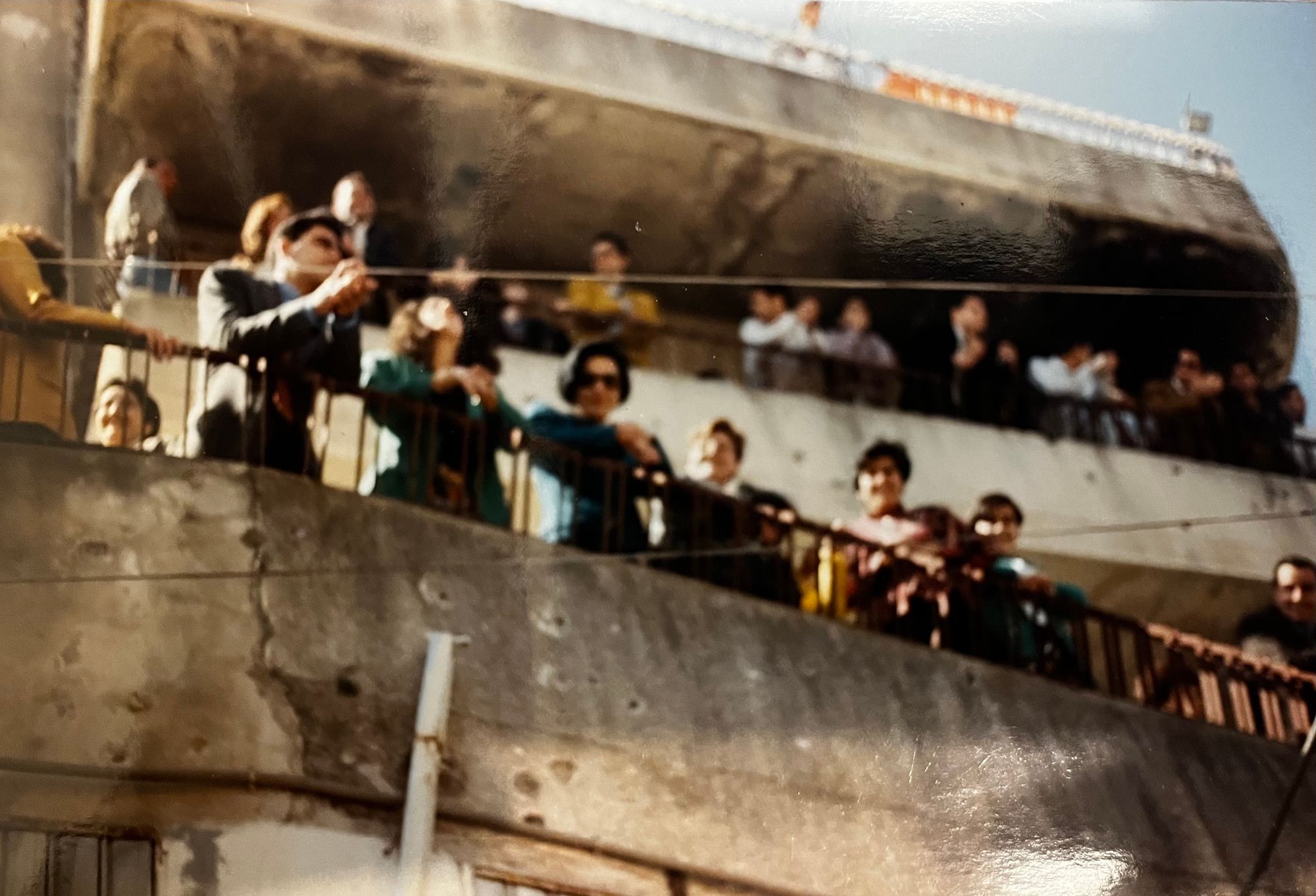
Capital of the South and Lebanon’s third largest city, Saida is home to a predominantly Sunni Muslim population that includes a significant Palestinian presence. At its north, Saida’s entrance lies where the Awwali River empties into the Mediterranean Sea. Here, the Saida Municipal Stadium looms large like the outstretched wings of a bird perched along the water. Traffic jams stretch on the coastal highway from Beirut as cars sluggishly make their way through an entrance checkpoint. In the urban core of Old Saida, historic edifices from the Crusades and Ottoman Empire rise from the sea and jostle with run-down, modern multistorey residences. Citrus groves, banana fields, and plastic greenhouses ring the core in the traditional orchard areas of Wastani and Dekerman, separating them from multi-confessional hillside settlements on once tree-covered lands: Haret Saida, Abra, and Miyeh w Miyeh. The Sayniq River’s outlet marks Saida’s southern tip.4
Historically, rivers like the Awwali have irrigated Saida’s orchards, which have contributed considerably to the city’s economic activity.5 Overtime, and as agriculture has become less profitable, cultivated lands have been encroached on by real estate development and rivers channelized with concrete and turned into sewage conduits. Buildings catering to a booming populace, investors, and Gulf-based Lebanese in search of secondary homes have popped up along the coast, on orchards, and in the hills.6 An unmanaged urban sprawl typical of Lebanon. Breezes once tinged with tangy whiffs of orange and lemon skins and salt from the sea are now overpowered by the sweet, musty smell of cement.
Saida’s water infrastructures were first developed and managed by a private water company that belonged to the Tabet family. The family bought land in Nabeh Kfaroue in the neighboring province of Nabatieh. There, spring wells were dug and water conveyed by pipeline to the city’s growing population. In the early 1960s, the water company—like other water companies in Lebanon—became government-owned. By then, the spring water arriving at Saida was dwindling as towns and developments had sprouted along the pipeline’s route. New groundwater sources were added. In the early 2000s, and as part of the push to make public services ‘more efficient’ in preparation for their privatization, the Saida water office was merged along with nearby others into the South Lebanon Water Establishment, under whose jurisdiction it still lies.7
Today, Greater Saida, including Municipal Saida and its hillside satellites, gets its water from springs like Nabeh Kfaroue and Nabeh El Tasseh and from groundwater wells at the Fawwar Treatment Plant and Serail Treatment Plant, among other locations. Spring sources once made up more of the city’s water supply than groundwater; but population growth and the recent rerouting of some water from Nabeh el Tasseh to the city of Nabatieh have changed things.8 Saida’s public groundwater wells have been substantially supplemented by legal and illegal private counterparts. The city has one storage reservoir system at the Fawwar Treatment Plant that meets a seventh of its daily needs. Surrounding villages have their own wells and tiny reservoirs, and in some cases manage their own water supply completely independent of the South Lebanon Water Establishment.9
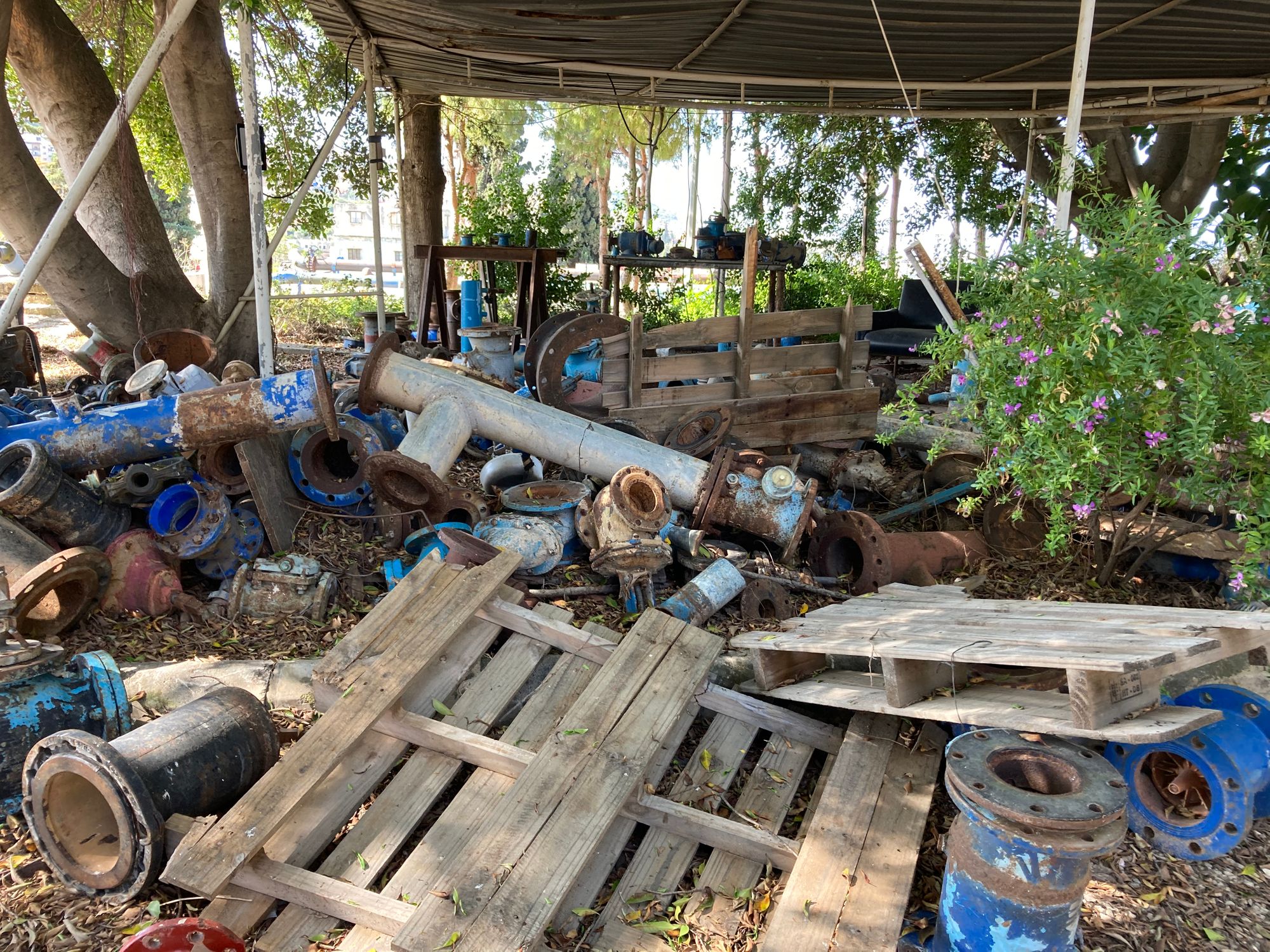
M is an electrician who has been working with the water authority in Saida for decades. His journey began as a technician in the early 1980s, when he worked the night shift at the water treatment plant. Long and monotonous hours of monitoring and repair, repair and monitoring, punctuated by explosive events like the emergence of armed resistance against Israel; the Lebanese Civil War (1975–1990); the Israeli invasion and occupation of the Lebanese South; and, most recently, Israel’s 2006 war on Lebanon.10
By the 1980s, Saida was already a site of resistance activity and a target of Israeli attacks, like much of Southern Lebanon. Palestinian refugee camps like Saida’s Ain el Helweh had come under Palestinian militant control, which had intensified with the legalization of armed resistance in Lebanon by the Cairo Agreement of 1969 and the Palestine Liberation Organization’s expulsion from Jordan and move into Lebanese territories in 1970. Armed resistance against Israel and against the pro-Western government by parties like the PLO and the Popular Nasserite Movement fomented in Ain el Helweh and nearby public housing project Ta’meer Saida, and spilled out into the city’s streets. Resistance was met with Israeli attacks, and led to clashes with the Lebanese and Syrian militaries and opposing militias, including the Israeli allied-South Lebanon Army. Akram, who grew up in Saida, describes how the city was transformed by a “culture of arms.” The modern planned development of New Saida, which was supposed to be the “city of the future,” instead became a “city of conflict,” he says. Popular political parties were quickly infiltrated by armed factions, regional powers, and personal interests, and today remain as organized thugs.11 Israel’s attacks on Southern Lebanon throughout the 1970s, and its 1978 invasion and occupation of territories south of the Litani River brought waves of displaced and wounded into Saida as they would continue to do decades on.12 I remember being transfixed by news reports of wounded being ferried by ambulances to Saida’s hospitals in the 2006 war.
In 1982, Saida fell under Israeli occupation with the invasion offensive ‘Operation Peace for Galilee,’ which reached all the way to Beirut. M says not much changed in his work under Israeli occupation, which lasted in Saida for three years; even occupiers, M reasons, need water and water providers.13 Akram remembers how Saida was occupied in under a week, which he spent in the basement of his family home. Parts of old Saida, he says, were badly damaged, and endure into the present as empty plots that testify to this past.14 Ain el Helweh, which was shelled for days, fared the worst.15 Akram remembers the nights of that week as particularly dark.16 Saida’s power plant had been struck, and the city was without power for many days17 and in places with only rancid water, if any at all.18 In the invasion’s immediate aftermath, newswire reports mention residents collecting water in pots and pans from an Israeli army tank parked outside the occupation headquarters.19 Within weeks, electricity and water were restored in the city.20 But as services like water were reintroduced, new systems and policies were instituted for the first time. Mass arrests on suspicions of involvement in resistance activities, restrictions on the movement of people and goods between the occupied South and unoccupied Lebanon, and the flooding of southern markets by Israeli goods became features of daily life. Discontent evolved into regular guerilla attacks on Israeli forces that eventually led to their withdrawal in 1985.21
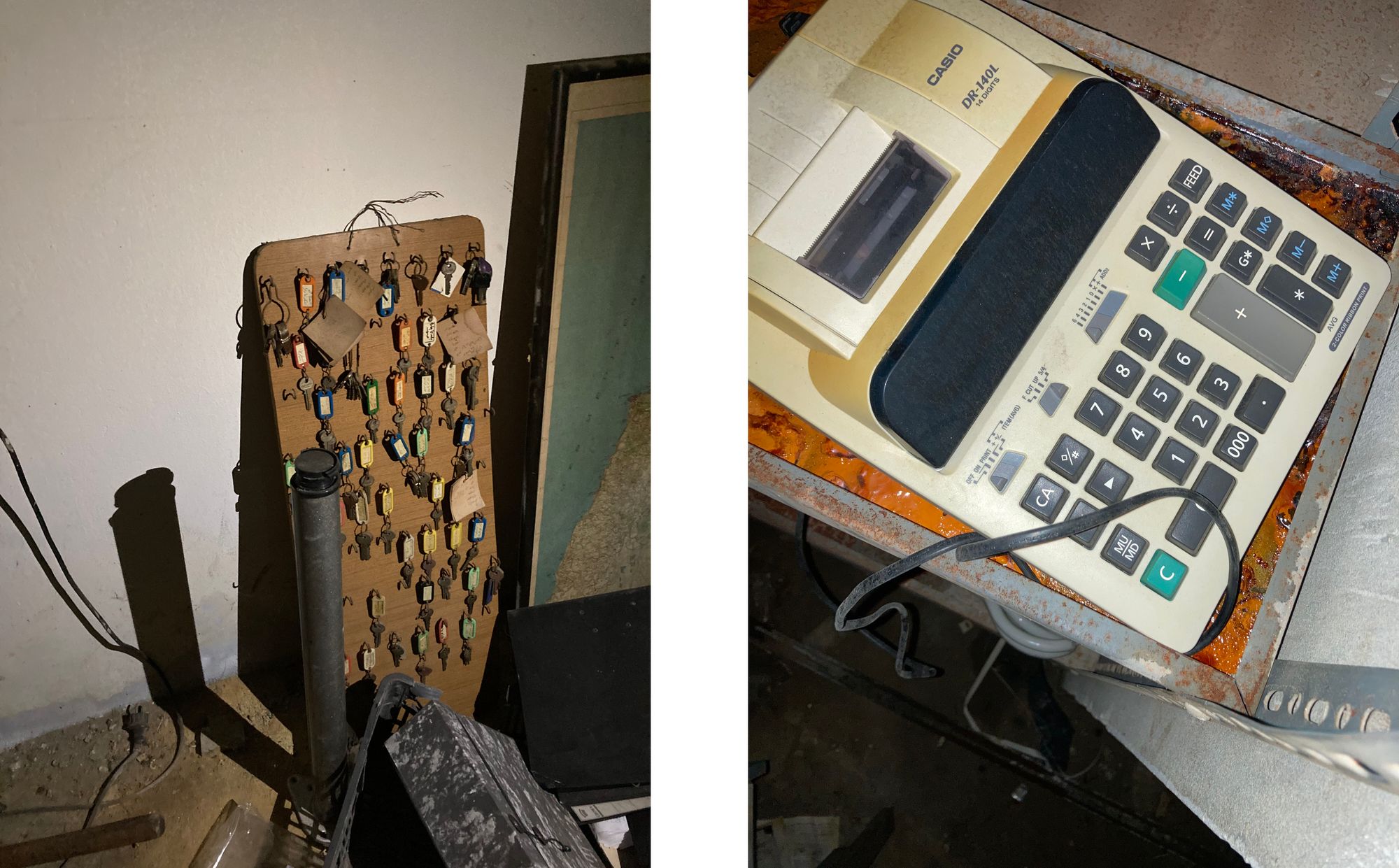
Amnesiacs can’t recall the past and can’t imagine the future, I recently learned.
Scientists claim that imagining the future is essentially remembering the past.
Looking back and looking forward both involve constructing mental scenes and use the same parts of the brain.22
I remember the moment of silence my school held for the victims of Israeli attacks in 1996, just as Sary remembers a pin he was given to mark United Nations ‘Resolution 425’ that calls for Israel’s withdrawal from Lebanon. When Sary and I recall these experiences, we reconstruct them as scenes in our heads. Maybe I hear once again the slight breeze that seemed to amplify the sounds of everything that couldn’t be silenced and sense the lump in my throat at the seeming cruel carelessness of those sounds. Maybe he still feels the metal on his fingers or the scratch of his t-shirt from when he clipped his pin on. When we imagine the future, we construct ‘pre-lived’ scenes by drawing on bits and pieces of memories like these. We combine memories with encultured expectations of the future to envision what may or may not come.23
Our ability to imagine the future and plan for it increases our chances of survival, some argue. Futuring has an evolutionary advantage. But the futures we envision are only slightly different versions of the past and present on which they are based.24
What does water’s future look like when viewed from the lens of Saida’s recent history?
When M imagines Saida’s future and thinks about how to ‘future-proof’ the city’s water supply, he draws on memories of Israeli attacks on water infrastructures from the 1990s and 2000s, and on shortages in electricity and diesel fuel today. M tells us how operators plan for the future in anticipation that infrastructures might be targeted by Israel. In the 1990s, he says, almost every other Israeli airstrike on Lebanon hit an infrastructure facility;25 such infrastructural targeting amounts to what urbanist Stephen Graham calls ‘demodernization by design,’ for if water networks, electricity grids, roads, and fiber cables enable the flourishing of modern life, then their deliberate destruction effectively de-modernizes.26 Fearing Saida’s main storage reservoir might one day be hit, M developed a badeel—i.e. a bypass or body double—for a pipe connecting a water treatment plant to the reservoir system that feeds the city’s network. With the bypass, water can go straight from the plant into the network, circumventing the future reservoir-in-ruins were the reservoir to be struck.27 Building backups or redundancies into infrastructures to ensure a breakdown in one part doesn’t bring the system down is common practice in engineering, Sary says. But in Lebanon, he adds, built-in redundancies are more extreme in part because of the conflict with Israel.28

Albert Camus’s 1942 treatise on existentialism, The Myth of Sisyphus and Other Essays, recounts the story of Sisyphus, who, punished by the gods, must push a heavy rock up a hill, only for it to roll back down to the bottom once he’s reached the top. From the bottom, he must push the rock up again. Over and over and over, Sisyphus repeats this same action to no resolution nor end. I remember being unsettled in my stomach by Sisyphus’s absurd fate, even as Camus reassured me he was an “absurd hero” for having accepted his meaningless lot.
When I think of the absurd, I am reminded of infrastructure in Lebanon, no more so than in the South.29 Here, infrastructure evolves through cycles of construction-destruction-and-reconstruction and time appears to move forwards and back. Emphasizing the significance of reconstruction, development studies scholar Karim Eid Sabbagh writes, “[i]nfrastructure reconstruction has remained a major development concern over the last 20 years.” It emerged as a concern with the end of Lebanon’s civil war, which left significant infrastructure systems majorly damaged. But as Eid-Sabbagh adds, it has “repeatedly been brought to the fore [since] as a result of the destruction from the numerous Israeli attacks (1993, 1996, 2006) on the country.”30
Already in the 1980s, destroyed infrastructures were undergoing reconstruction during wartime lulls. Established by the Lebanese government in 1977 following a 1976 ceasefire, the Council for Development and Reconstruction (CDR) launched in 1978 the first of many reconstruction plans aimed at rebuilding infrastructures back to pre-war levels. The plan outlined reconstruction projects with unspecified timelines that were postponed with the renewal of civil and military violence. Following the 1982 Israeli invasion, the CDR released an updated plan in 1983 to address additional widespread infrastructure damage, but that plan suffered the same flaws and fate. With the war’s conclusion, the CDR issued a National Emergency Reconstruction Program in 1991–1992, which was incorporated in 1993 into the government’s Horizon 2000 strategy. Projects from 1978 and 1983 make a reappearance in Horizon 2000,31 and so on and so on.
Reconstruction, postponement, and the recycling of projects mark water sector planning as well. As economist and geographer Roland Riachi says, during the post-war reconstruction era, in which infrastructure (re-)development was largely financed through donations and loans, the Lebanese government eagerly revived and recycled cold-war developmentalist projects—with earlier colonial era inheritances—in order to attract lenders and bring money into the country. Most of the dams built or planned to be built in Lebanon since 1990 have such origins. Many are still not completed,32 stalled by disagreements over the sectarian distribution of projects and spoils among clientelist politicians, and rising costs due to work delays and rampant corruption, among other reasons.33 The confessional political system in Lebanon means that every decision, from what new project is built for which community’s benefit to where a network line is laid down, is a point of contention.
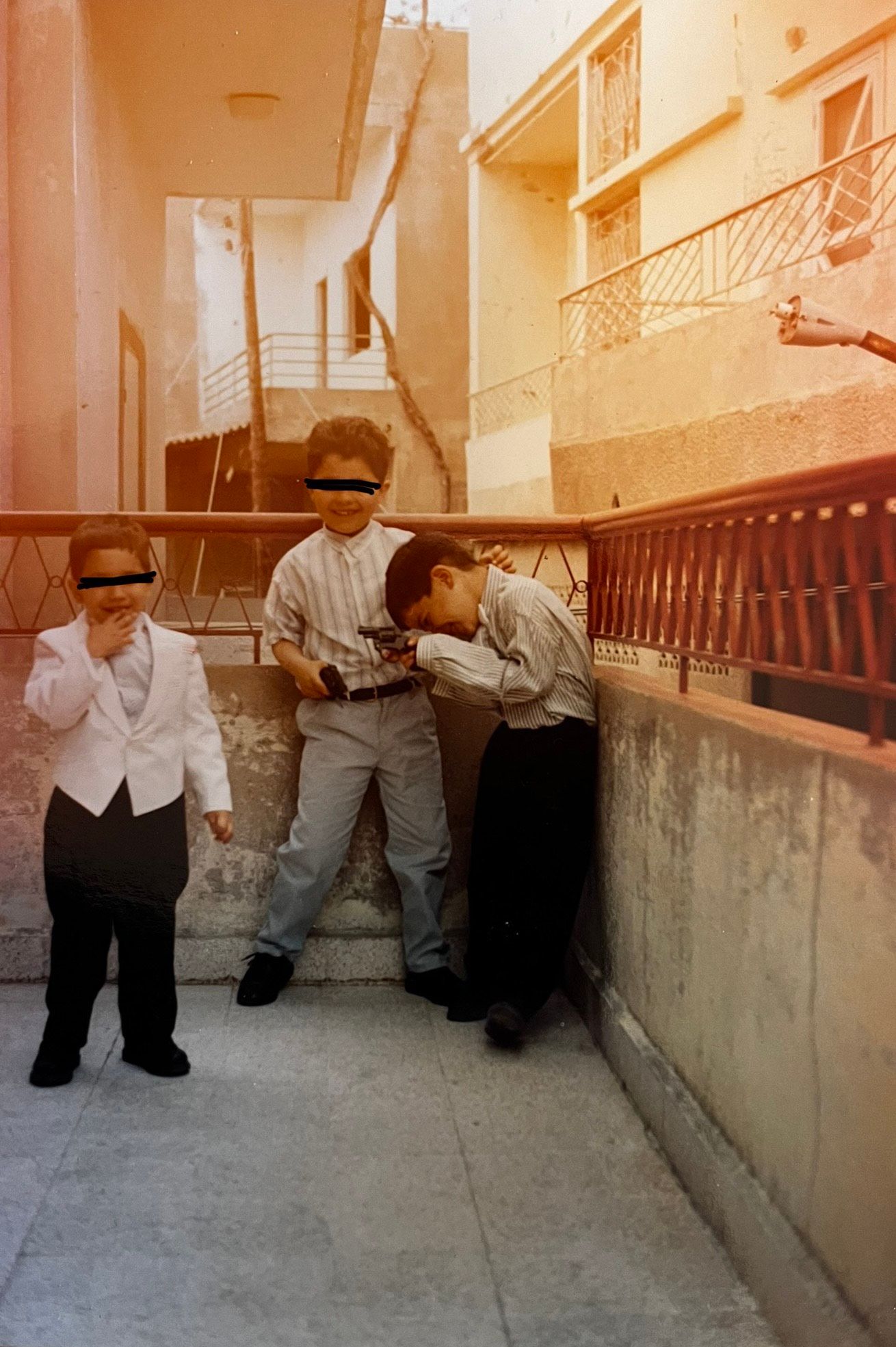
Saida’s prodigal son, Rafic Al Hariri, was footing infrastructure reconstruction bills for the city from as early as 1982.34 Golden soles is how Syrian documentarian Omar Amiralay describes Hariri’s shoes.35 A Sidonian businessman, he became a billionaire working as a contractor for the Saudi royal family and served as “a conduit for Saudi redevelopment money” in Lebanon.36 In the 1990s, Hariri rode into government on a wave of modernizing discourses37 and emerged as the uncontested political leader of Lebanon’s Sunni community; his staunchest supporters were in his hometown of Saida.38 Hariri was twice prime minister (1992–1998; 2000–2004) before his assassination in 2005. As premier, Hariri prioritized rebuilding physical infrastructures over the state. A policy of infrastructure reconstruction funded through loans from Lebanese commercial banks led to a spiraling national debt and a turn to relying on donations and loans from bilateral and multilateral organizations. The CDR, the main institution tasked with overseeing reconstruction projects and distributing funds, fell under the purview of Hariri, who ensured it remained autonomous and used it to dole out contracts and favors in exchange for political support.39
Similar dynamics enabled the Hariri family, and especially sister Bahia Al Hariri, to monopolize development in Saida. The iron lady who never sleeps is what supporters call her. The charitable Hariri Foundation she heads gets funds through national and international allies, including the CDR, that it invests in projects which benefit clients and cultivate allegiance. While projects in Saida approved by Hariri get funded and built, opponents find their projects stalled, for instance, by Hariri-allied ministries. In the 2000s, the Hariri Foundation cemented its position as development gatekeeper when it brought civil society organizations active in Saida into a network over which it presides.40 Akram says that no matter where you stand politically, Rafic Al Hariri did a lot of development work in Old Saida in the 1990s. More recently, Sidonian businessman Mohamad Zeidan has emerged to fill Hariri’s golden-sole shoes as Old Saida’s charitable benefactor.41 The Mohammad Zeidan Foundation has renovated buildings, streets, and markets throughout the city’s urban core.42
Sary talks about Lebanon’s obsession with deliverance following Hariri, who emerged as the country’s savior in the post-war era with his “Government of Economic Salvation.”43 In Lebanon, the crisis mode of the everyday is punctured by the expectation that some solution, savior, or deliverance is going to inevitably come, he says. But such hopes, he adds, overlook the role played by Hariri’s policies in the economic crisis we find ourselves in.44
Hope is an escape from the absurdness of reality according to Camus.45
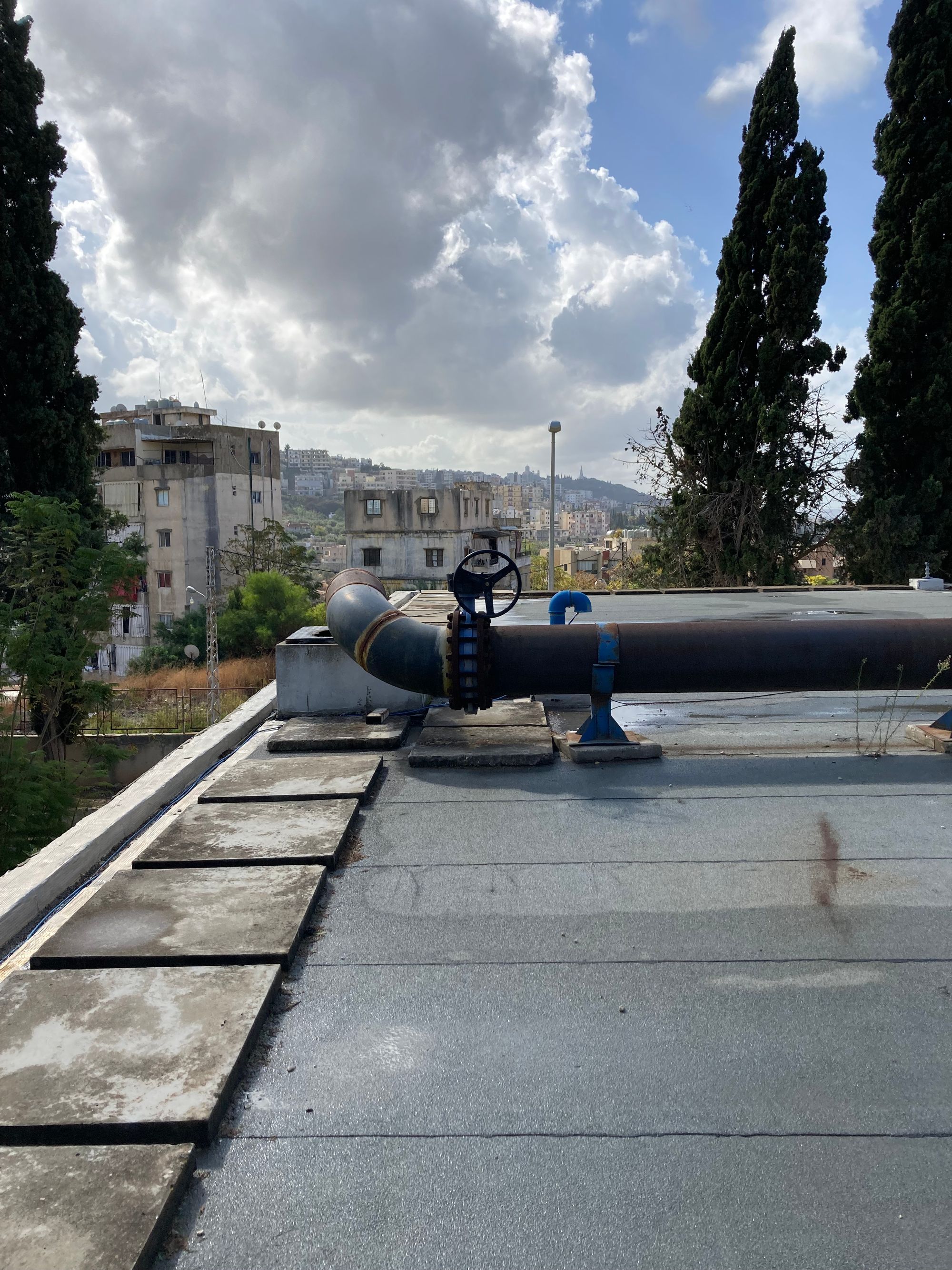
Dreams have a “wish fulfilling tenor”46 or so suggests Sigmund Freud. Dream-life continues waking-life, and fulfills desires otherwise unmet. Dreams can be forgotten - through psychic repression - almost as soon as they’ve been had.47
Under current conditions, Sary likens planning in Lebanon to a dream. It seems absurd, he says, to develop plans spanning decades when even the short-term future is so uncertain. What will happen socially and politically in the next 5 or 10 years, and what will that mean for where, when, and whether infrastructures will get built? Plans and strategies for the distant future are drawn up by Lebanese water authorities, but authorities are often just overwhelmed by the urgent demand of making sure water doesn’t run out. Systematic issues, larger considerations, and long-term challenges like climate change are set aside for a future that never seems to come. Such short-termism, Sary clarifies, “doesn’t come from the absurd” and is “not about the fact that I don’t care about the future.” It is about how history has unfolded thus far. “It isn’t that absurd to give in to this logic when you feel helpless about changing things,” Sary concludes.48
M says you can dream. You ask for this or that, but no one helps you get things done and you can’t do everything yourself. He says you can plan, but can you make things happen? And if you try to make things happen, can you in fact control them? A while back, he tells us, he proposed to build wells and a big storage reservoir up in Lebaa, from where water could be conveyed downwards by gravity; he also proposed to pump water from the Awwali River up to hillside areas with electricity from the Charles Helou Hydroelectric Power Station on the Litani River. Back in the war, he remembers, water from Nabeh el Tasseh would reach all the way to the east of Saida at Majdelyoun. But when the Israeli allied-South Lebanon Army took over, they cut the pipe leading there. M fears a pipe from Lebaa or the Litani, if built, could one day be cut and that sectarian tensions could be re-ignited in this way. He says: “It was war then. Now things are maybe a bit different but the same views continue to prevail.”49
Writing about Beirut and its peripheries, urbanist Hiba Bou Akar has characterized views like M’s as ‘planning for the war to come.’ Bou Akar argues that such planning has temporal and spatial implications. “Temporally, it presents a moment from which the future can be imagined only as a time of further violent conflict. Spatially, it invokes a regulating logic in which Beirut’s peripheries are envisioned not only as spaces of urban growth and real estate profit but also as frontiers of future wars.”50 ‘Planning for the war to come’ undergirds water management in Lebanon that is guided by partisan competitions over access to resources or attempts like M’s at sidestepping them.
In the 2010s, water rationing was a recurring theme for residents of Saida as pumps were idled by ever frequent electricity cuts and the exorbitant costs of running back-up generators. In 2011, for instance, it was discovered that untreated wastewater was being dumped into the sea to avoid turning on the generators at the newly opened Saida Wastewater Treatment Plant when electricity outages were in effect. In response to water rationing, angry protestors have occupied the offices of the South Lebanon Water Establishment year after year.51
Electricity cuts are particularly challenging given Saida’s small storage capacity, which means that water needs to be continually pumped into the system. M tells us that he recently came up with a make-shift solution: he connected a pump to the network to speed up water’s delivery from the reservoir system that can otherwise take hours to fill and reach residents by gravity alone. When the power goes out, the reservoir and network empty and water no longer reaches residents, but with a pump, the reservoir doesn’t have to be full for water to be delivered at greater speeds. M says that he could have resorted to turning on a backup generator, but that el mazout illi bi rouh ma fi badlo (“diesel used today means there’s less diesel tomorrow”).52
Today, high power and maintenance costs and low service fee revenues raise existential doubts as to the government’s ability to afford running the current system;53 they also provide political parties, who have greater means, with an opportunity to finance operations and gain support. M tells us that in April, the South Lebanon Water Establishment faced serious diesel shortages that would have impacted its ability to keep the city’s water supply on. Hezbollah, a significant political force in South Lebanon since the 1990s, gifted the establishment 8,000 liters of diesel that enabled it to avoid a disaster.54 Conversely, in late May and early June, rumors circulated that the extended water cuts Saida residents were facing was to punish them for not voting for Hezbollah in the most recent parliamentary elections.
Akram says that the absence of transparency around water and where it comes from can lead imaginations to run wild.55
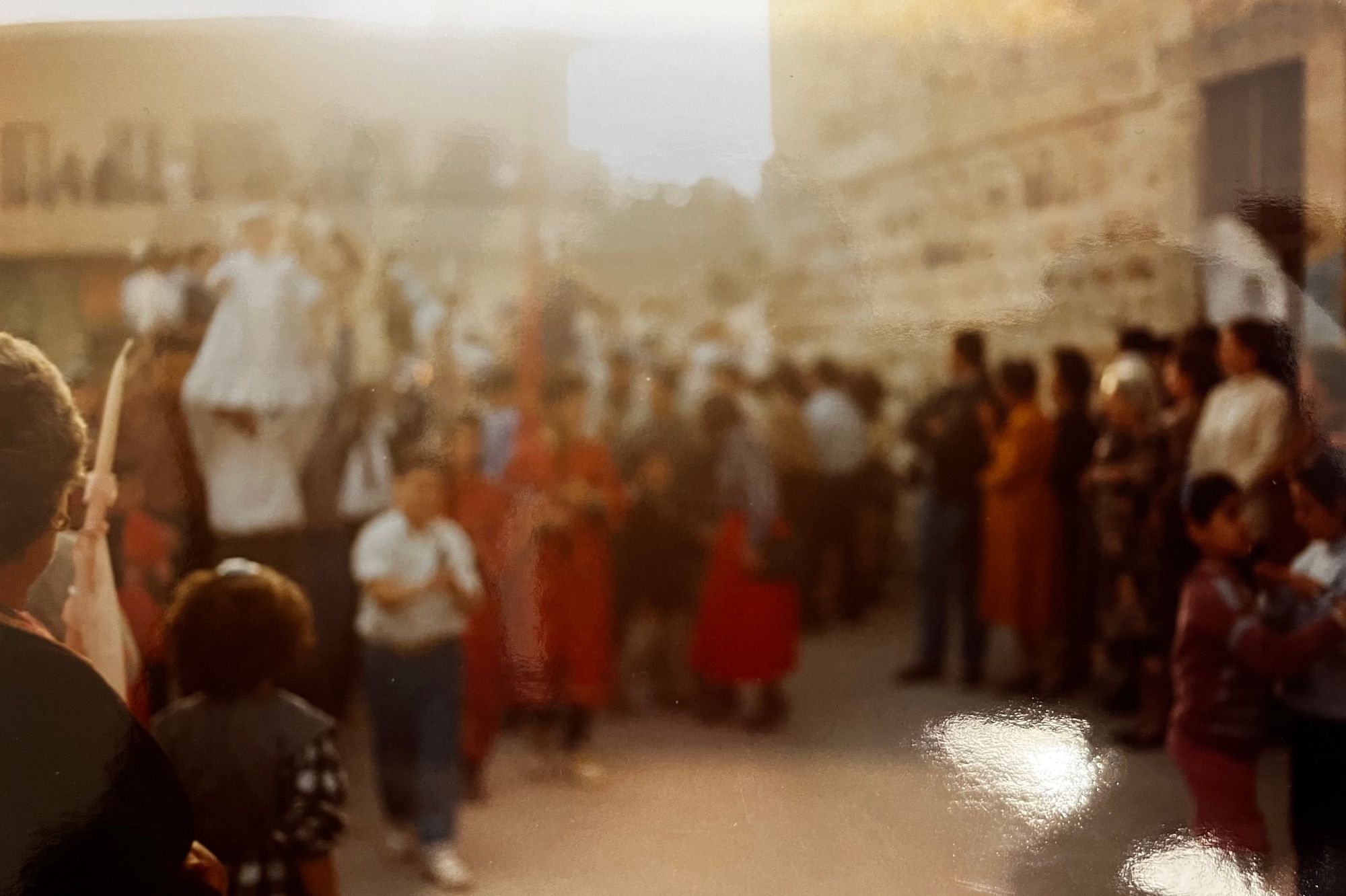
In his 1982 essay “Progress Versus Utopia; or, Can We Imagine the Future?” literary critic Frederic Jameson tackles the question of future imagining in science fiction. Taking issue with common conceptions of sci-fi as an anticipatory genre, Jameson suggests that sci-fi future worlds are not “‘images’ of the future at all” but ways to defamiliarize the present and address the unaddressable. He writes that “multiple mock futures serve the quite different function of transforming our own present into the determinate past of something yet to come.” The future in sci-fi is always determined by our present as its history. Rather than imagining the future, according to Jameson, sci-fi demonstrates our inability to do so or “the atrophy in our time of what [Herbert] Marcuse has called the utopian imagination, the imagination of otherness and radical difference.” Of utopian sci-fi in specific, Jameson suggests that utopian writing points to the failure of the utopian imagination, which he attributes to “the systematic, cultural, and ideological closure of which we are all in one way or another prisoners.”
Jameson see a silver lining, however, suggesting that “there is, indeed, something also at least vaguely comforting and reassuring … that all these things [in our present] are not seized, immobile forever, in some ‘end of history’ [as they appear in sci-fi] but move steadily in time towards some unimaginable yet inevitable ‘real’ future.”56 But what if that “unimaginable yet inevitable ‘real’ future” we are moving towards in Lebanon is as it increasingly seems or as we make it out to be: an endless repetition of pasts and the preparation in the present for them?
Words uttered by Shia Imam Musa Al-Sadr and spray painted on a Saida wall might shed some light. “My revolutionary brothers, you are like the waves in the ocean. If you stop moving, you will be finished,” the words read. These are excerpted from a 1976 speech by Al-Sadr in which the Imam beseeches listeners to resist Israel or else face the existential threat of extinction.57 Sumoud is what this steadfast resistance is called. Sary speaks of being haunted by Al Sadr’s words years after first encountering them.
Perhaps it is only steadfastness that remains in a reality so circumscribed by ‘planning for the war to come,’ anticipated airstrikes and declines, cycles of construction-destruction-and-reconstruction, and atrophied utopian imaginations. Steadfastness and the hope it belies—even if escapist. I think back to M and to Metropolis’s early machine hall scenes, for while Metropolis ends with its laborers’ emancipation,58 M continues his work 40 years on. Is steadfastly keeping the machines running as M does the limited utopia we have left to aspire for? What are the implications of this for the future of our machines and the social and political worlds from which they emerge? And if as anthropologists Hannah Appel, Nikhil Anand, and Akhil Gupta suggest infrastructure bears promise,59 then is infrastructure’s promise in Lebanon the same as that borne in the rhetoric of sumud? Is the eventual betrayal of that promise, moreover, hinted at by the warned-of fate of Al Sadr’s waves? Hope offers an escape from a reality of fixes that must happen like the waves that cannot stop. Happening for the sake of continuing. Continuing that enables mere happening. Nothing else.
[1] Fritz Lang. Metropolis. Paramount Pictures, 1927.
[2] Interview between Sary Moussa and M. 25 April 2022.
[3] Personal interview with Sary Moussa. 11 January 2022.
[4] Aida Biscevic and Mario Auricchio. Inscribing the New City: Alternative Strategies for Urbanizing Agricultural Landscape of Saida. 2014. [Master’s Thesis, Katholieke Universiteit Leuven]. Accessed: https://lilmadinainitiative.files.wordpress.com/2016/02/auricchio_biscevic_inscribing-the-new-city1.pdf.
[5] Jala Makhzoumi and Salwa Al-Sabbagh. “Landscape and Urban Governance: Participatory Planning of the Public Realm in Saida, Lebanon.” Land 7.2 (2018).
[6] Aida Biscevic and Mario Auricchio. 2014; Jala Makhzoumi and Salwa Al-Sabbagh. 2018; Personal conversation with Akram Zaatari and Sary Moussa. 13 June 2022.
[7] Interview between Sary Moussa and M. 25 April 2022.
[8] Personal interview with Sary Moussa. 11 January 2022.
[9] Ibid.
[10] Interview between Sary Moussa and M. 25 April 2022.
[11] Personal conversation with Akram Zaatari and Sary Moussa. 13 June 2022.
[12] See: Associated Press. No Title in Original. 3 September 1977; Associated Press. No Title in Original. 8 November 1977; Michael J. Duffy. No Title in Original. Associated Press. 17 March 1978; Farouk Nassar. No Title in Original. Associated Press. 10 April 1978.
[13] Interview between Sary Moussa and M. 25 April 2022.
[14] Personal conversation with Akram Zaatari and Sary Moussa. 13 June 2022.
[15] David K. Shipler. “Piles of Rubble Were the Homes of Palestinians.” The New York Times. 3 July 1982.
[16] Personal conversation with Akram Zaatari and Sary Moussa. 13 June 2022.
[17] Terry Anderson. “Israeli Military Administrators Move into Southern Lebanon.” Associated Press. 17 June 1982; David K. Shipler. “In Lebanon, White Flags Fly Amid the Misery and Rubble.” The New York Times. 15 June 1982.
[18] Stewart Dalby. “They Dumped the Sick on the Beach and Everyone Ran for It.” Financial Times. 17 June 1982; Richard Pyle. “Common Burial for Sidon Victims.” Associated Press. 16 June 1982.
[19] Brooke W. Kroeger. No Title in Original. United Press International. 14 June 1982.
[20] Ken Kusmer. “Israel Says 600 Killed in Sidon, Tyre.” Associated Press. 20 June 1982; “Israel Lowers Casualty Figure, Red Cross Asks Cooperation.” Associated Press. 5 July 1982; “Israel Helps Rebuild Lebanon Despite Tensions in Beirut.” Engineering News Record. 8 July 1982. p. 13.
[21] Personal conversation with Akram Zaatari and Sary Moussa. 13 June 2022.
[22] Julie Beck. “Imagining the Future is Just Another Form of Memory. The Atlantic. 17 October 2017. Accessed: https://www.theatlantic.com/science/archive/2017/10/imagining-the-future-is-just-another-form-of-memory/542832/.
[23] Ibid.
[24] Ibid.
[25] Interview between Sary Moussa and M. 25 April 2022.
[26] Stephen Graham. “Demodernizing by Design: Everyday Infrastructure and Political Violence.” In Violent Geographies: Fear, Terror, and Political Violence. Eds. Derek Gregory and Allan Pred. Oxfordshire: Routledge, 2007. p. 309-328.
[27] Interview between Sary Moussa and M. 25 April 2022.
[28] Personal interview with Sary Moussa. 11 January 2022.
[29] Albert Camus. The Myth of Sisyphus and Other Essays. Trans. Justin O’Brien. New York: Vintage Books, 1955. Originally published in 1942.
[30] Karim-Philipp Eid-Sabbagh. A Political Economy of Water in Lebanon: Water Resource Management, Infrastructure Production, and the International Development Complex. 2015. [PhD Thesis. SOAS, University of London]. p. 18.
[31] Tom Najem. “Horizon 2000: Economic Viability and Political Realities.” Mediterranean Politics 3.1 (1998). Special issue on The Challenges to Lebanon in the Future Middle East. p. 29-56.
[32] Personal interview with Roland Riachi. 17 January 2022.
[33] Karim-Philipp Eid-Sabbagh. 2015. p. 41-80.
[34] Trudy Rubin. “Early Welcome Wearing Thin for Israel in South Lebanon.” Christian Science Monitor. 6 August 1982.
[35] Omar Amiralay. The Man with the Golden Soles. Arte France - AMIP, 2000.
[36] Trudy Rubin. “South Lebanon Braces for Israeli Rule.” Christian Science Monitor. 7 September 1983.
[37] Omar Amiralay. 2000.
[38] Sima Ghaddar. “Machine Politics in Lebanon’s Alleyways.” The Century Foundation. 6 May 2016. Accessed: https://tcf.org/content/report/machine-politics-lebanons-alleyways/.
[39] Karim-Philipp Eid-Sabbagh. 2015. p. 64-94. While in south Lebanon and the Chouf, the Council of the South (under the purview of Amal Movement leader Nabih Berri) and Central Fund for the Displaced (under the purview of Progressive Socialist Party leader Walid Jumblatt) also oversaw and funded some reconstruction, in Saida projects were largely the responsibility of CDR.
[40] Sima Ghaddar. 6 May 2016.
[41] Personal conversation with Akram Zaatari and Sary Moussa. 13 June 2022.
[42] UN-Habitat and UNICEF Lebanon. Old Saida Neighbourhood Profile 2019. Beirut: UN-Habitat Lebanon, 2019. p. 17.
[43] Karim-Philipp Eid-Sabbagh. 2015. p. 84.
[44] Personal interview with Sary Moussa. January 11, 2022.
[45] Albert Camus. 1955.
[46] Sigmund Freud. Beyond the Pleasure Principle. Trans. and Ed. James Strachey. Introduction by Gregory Zilboorg. New York: WW Norton & Company, 1961. Originally published in 1920. p. 7.
[47] Sigmund Freud. The Interpretation of Dreams. Trans. A. A. Brill. Hertfordshire: Wordsworth Editions, 1997. Originally published in 1899.
[48] Personal interview with Sary Moussa. January 11, 2022.
[49] Interview between Sary Moussa and M. 25 April 2022.
[50] Hiba Bou Akar. For the War Yet to Come: Planning Beirut’s Frontiers. Palo Alto: Stanford University Press, 2018. p. 7.
[51] See: “Sidon Politicians Condemn Electricity and Water Crisis.” The Daily Star. 24 July 2010; Mohammed Zaatari. “Sidon Water Treatment Plant Pumping Sewage into Sea.” The Daily Star. 22 April 2011; Mohammed Zaatari. “Sidon Electricity and Water in Short Supply.” The Daily Star. 15 July 2011; Mohammed Zaatari. “Sidon Citizens Occupy Water Authority Office to Protest Shortages.” The Daily Star. 20 July 2012; Mohammed Zaatari. “Anger Boils in Sidon Over Power, Water Cuts.” The Daily Star. 6 August 2012; Mohammed Zaatari. “Sidon Residents Protest as Water Shortage Bites.” The Daily Star. 28 August 2018.
[52] Interview between Sary Moussa and M. 25 April 2022.
[53] UNICEF Lebanon. “Lebanon’s Water Infrastructure is Reaching a Breaking Point.” UNICEF. 18 January 2022. Accessed: https://www.unicef.org/lebanon/stories/lebanons-water-infrastructure-reaching-breaking-point.
[54] Interview between Sary Moussa and M. 25 April 2022.
[55] Personal conversation with Akram Zaatari and Sary Moussa. 13 June 2022.
[56] Frederic Jameson. “Progress Versus Utopia; or, Can We Imagine the Future?” Science Fiction Studies 9. 2 (July 2018). Special issue on Utopia and Anti-Utopia. pp. 147-158.
[57] Ibrahim Ali Naim. Imam Musa Al-Sadr: An Analysis of His Life, Accomplishments and Literary Output. 1998. [PhD Thesis. The University of Arizona]. p. 193.
[58] Fritz Lang. 1927.
[59] Hannah Appel, Nikhil Anand, and Akhil Gupta, eds. The Promise of Infrastructure. Durham: Duke University Press, 2018.
Nadia Christidi’s research is supported by the Swiss National Science Foundation
Nadia Christidi is a PhD candidate in History, Anthropology, and Science, Technology, and Society at MIT and an arts practitioner. Her research explores how the future of water is being imagined and prepared for in cities facing water supply challenges which are intensifying with climate change. Working at the intersection of art, research, and public pedagogy, Nadia has presented work and public programs at Beirut Art Center, SALT Galata, SALT Ulus, Kunsthaus Hamburg, Jameel Arts Centre, the Al Sidr Environmental Film Festival, and Ocean Space. Nadia was previously a TBA-21 Academy Ocean Fellow, a Rasikbhai L. Meswani Fellow for Water Solutions at MIT, an Art Jameel Arts Research and Writing Resident, and a Delfina-FICA Research Fellow. She holds an MA in Historical Studies from the New School for Social Research and BA in History of Art from Bryn Mawr College.
Sary Moussa is an electronic musician who has been active in the Beirut underground scene since 2008. He released his first full-length album Issrar in October of 2014 under the moniker radiokvm.
His latest record Imbalance, finds Moussa revisiting the soundscapes of his childhood; from the echoes of political unrest, to Greek-Catholic chants, and the quiet nights of a secluded Southern village. The album combines sound design with intricate melodic arrangements to create a choir of synthesizers and noise singing in and out of sync.
In addition to his solo work, Moussa has also composed music for theater and dance performances, short films, and museum installations.

